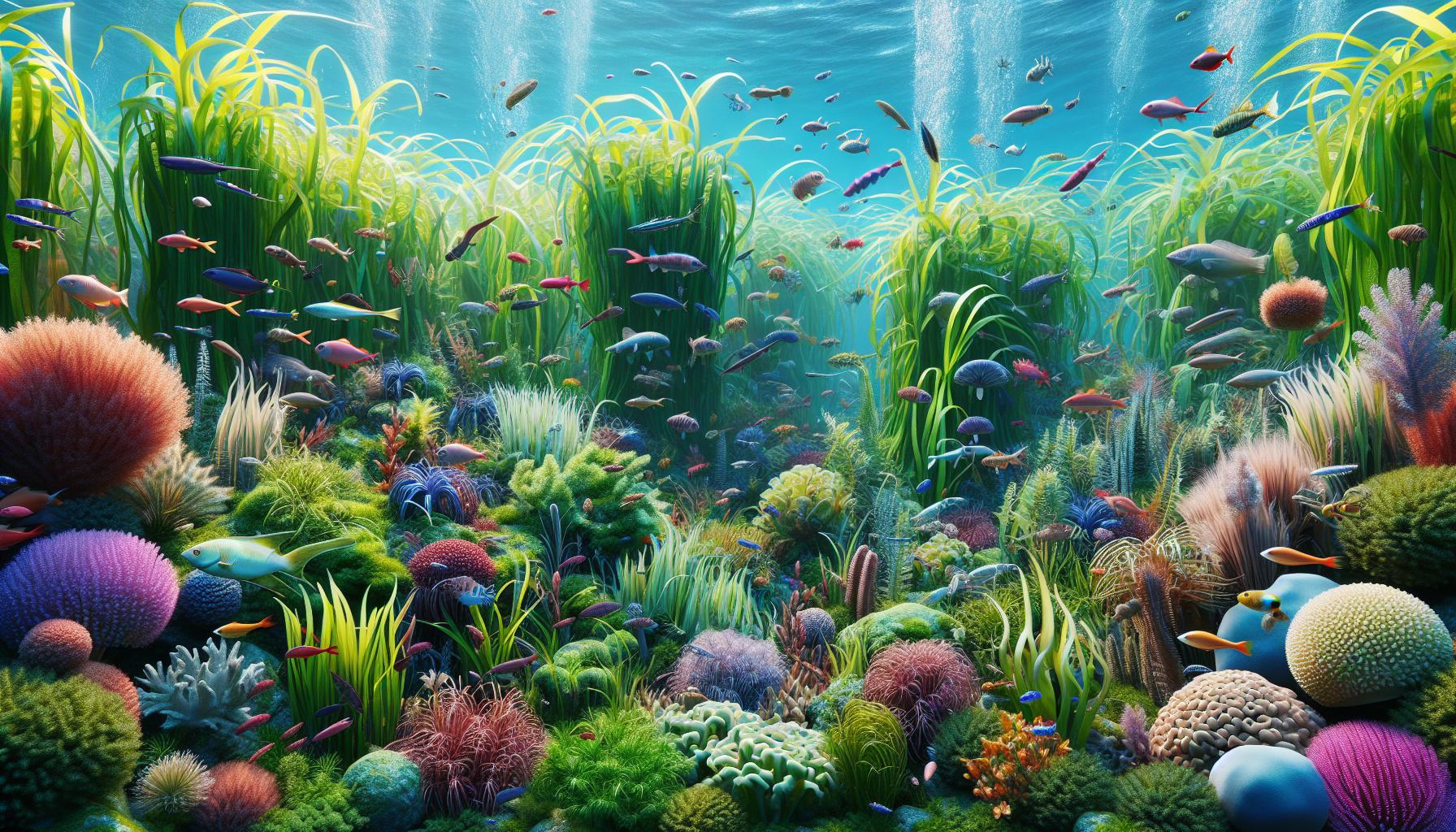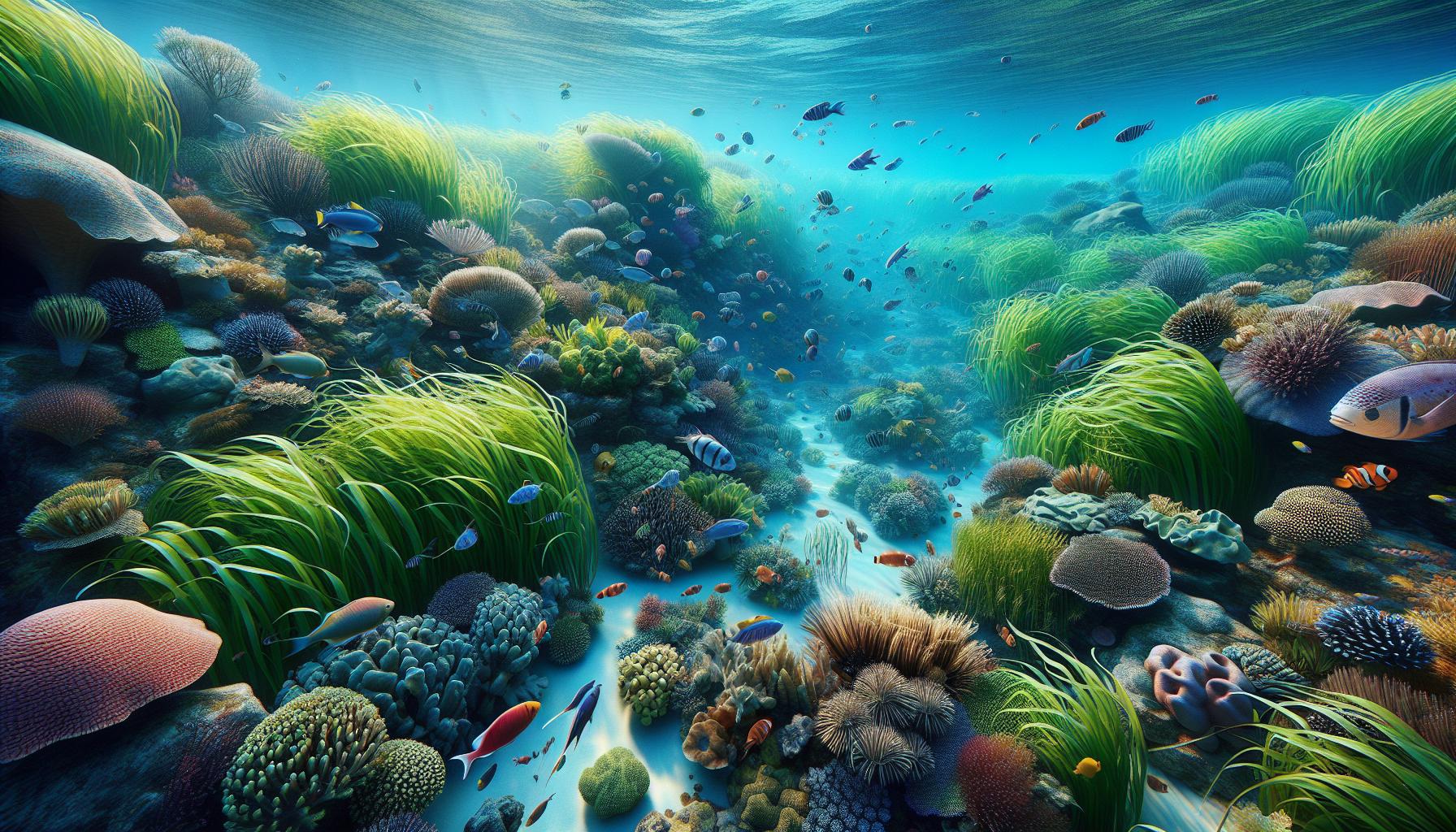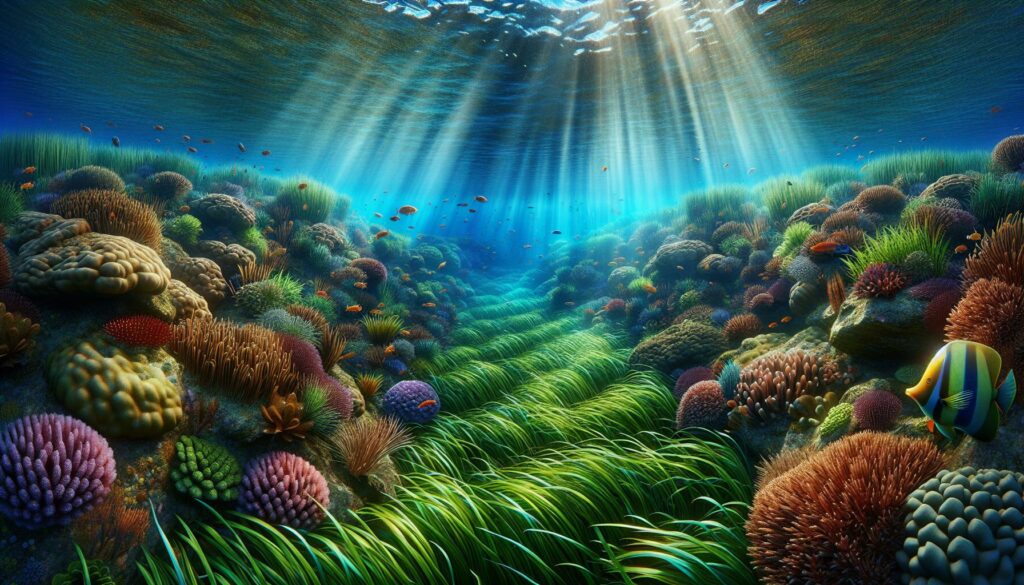The Great Barrier Reef is often celebrated for its vibrant marine life, but the role of plants in this ecosystem is just as fascinating. From the lush seagrasses to the colorful corals, these plants provide essential habitats and support a diverse array of species. I’ve always been captivated by how these underwater plants not only sustain marine life but also contribute to the reef’s overall health.
Understanding the types of plants that thrive in the Great Barrier Reef can deepen our appreciation for this natural wonder. Whether it’s the delicate balance of seagrass meadows or the intricate relationships between corals and algae, each plant plays a crucial role in this underwater paradise. Join me as I explore the incredible world of plants in the Great Barrier Reef and their significance in maintaining this breathtaking ecosystem.
Key Takeaways
- Essential Role of Plants: Plants like seagrasses and macroalgae are crucial for the ecological health of the Great Barrier Reef, providing habitats and supporting biodiversity.
- Seagrass Benefits: Species such as Zostera and Posidonia stabilize seabeds, filter pollutants, and serve as nurseries for marine life, enhancing overall coastal health.
- Macroalgae’s Significance: Different types of macroalgae contribute to the reef’s ecological balance by supplying oxygen and serving as food for herbivorous fish, indicating environmental health.
- Impact of Climate Change: Rising sea temperatures and ocean acidification threaten plant life, disrupting vital symbiotic relationships and diminishing the growth of corals and seagrasses.
- Pollution Risks: Agricultural runoff and human activities introduce harmful nutrients and pollutants, leading to algal blooms that can smother seagrasses and compromise water quality.
- Conservation Efforts: Initiatives like seagrass transplanting and coral gardening, along with community involvement, are vital for restoring habitats and sustaining the Great Barrier Reef’s ecological integrity.
Plants in the Great Barrier Reef
Plants play a critical role in the Great Barrier Reef ecosystem. They provide essential habitats, contribute to biodiversity, and maintain water quality. Two main types of plants dominate this region: seagrasses and macroalgae.
Seagrasses, primarily Zostera, Halophila, and Posidonia species, thrive in shallow waters. These flowering plants form extensive meadows that act as nurseries for various marine species. Seagrasses stabilize the seabed, preventing erosion and allowing sediment to settle. They filter pollutants and improve water clarity, which benefits corals and other marine organisms.
Macroalgae, including red algae, green algae, and brown algae, participate in the reef’s ecological balance. They supply oxygen through photosynthesis and serve as food sources for herbivorous fish. Certain macroalgae can indicate the health of the reef ecosystem, as their abundance reflects nutrient levels and environmental conditions.
Corals, although classified as animals, share a symbiotic relationship with zooxanthellae, a type of algae. These algae live within coral tissues and provide essential nutrients through photosynthesis. The vibrant colors of corals come from these algae, showcasing the interconnectedness of life in the reef.
The diverse plant life in the Great Barrier Reef supports a rich marine environment. The interdependence of seagrasses, macroalgae, and corals reveals the importance of these plants in maintaining ecosystem health and resilience.
Types of Plants in the Great Barrier Reef

In the Great Barrier Reef, various plant species, such as seagrasses and algae, thrive and contribute significantly to the ecosystem’s health. Understanding these plant types enhances appreciation for their roles.
Seagrass Species
Seagrasses are vital components of the Great Barrier Reef ecosystem. Key species include:
- Zostera: This species, commonly known as eelgrass, forms extensive meadows that support numerous marine species.
- Halophila: Often found in deeper waters, this genus thrives in sandy substrates and offers habitat for various juvenile fish.
- Posidonia: Known for its long leaves, Posidonia helps stabilize sediment and provides shelter for smaller organisms.
Seagrass meadows from these species serve as nurseries for fish and other wildlife, enhance water clarity, and improve overall coastal health.
Algal Varieties
Various macroalgae types play crucial roles in the Great Barrier Reef’s ecological framework. Notable varieties include:
- Red Algae: Often used in marine environments for their ability to produce carrageenan, red algae contribute to habitat structure and provide food for herbivorous fish.
- Green Algae: This group, including species like Caulerpa, influences nutrient cycling and offers resources for grazing species.
- Brown Algae: Examples like Sargassum interact with coral reefs, providing additional habitat and serving as a food source for diverse marine life.
These algal varieties enhance the reef’s biodiversity while supporting the symbiotic relationships that are critical for sustaining ecological balance.
Ecological Importance of Reef Plants

Plants in the Great Barrier Reef serve crucial ecological roles, particularly in habitat formation and nutrient cycling.
Habitat Formation
Seagrasses like Zostera, Halophila, and Posidonia establish extensive meadows that create essential habitats for diverse marine species. These meadows provide shelter for juvenile fish and crustaceans, offering protection from predators. The dense growth of seagrasses stabilizes the seabed and reduces erosion, which helps maintain the integrity of the reef structure. Macroalgae play a complementary role by forming complex structures that enhance biodiversity and serve as food sources for herbivorous fish. Together, these plants form the backbone of the reef ecosystem, contributing to its overall health and resilience.
Nutrient Cycling
Plants in the Great Barrier Reef actively participate in nutrient cycling, promoting ecological balance. Seagrasses absorb nutrients from the water column, mitigating excess nutrient runoff and enhancing water quality. They contribute organic matter to the sediment, supporting a variety of microorganisms that facilitate nutrient breakdown. Macroalgae, which also absorb nutrients, cycle them through the ecosystem as they grow and decay. This process sustains food webs by ensuring a continuous supply of nutrients for both primary producers and consumers, thus maintaining the productivity of the entire reef system.
Threats to Plants in the Great Barrier Reef

Threats to plants in the Great Barrier Reef significantly impact the delicate balance of this ecosystem. Understanding these threats is crucial for conservation efforts.
Climate Change Impact
Climate change threatens plant life in the Great Barrier Reef through rising sea temperatures and ocean acidification. Increased temperatures lead to coral bleaching, which affects the symbiotic relationship between corals and the algae, zooxanthellae. This disruption reduces the nutrient availability for corals and seagrasses, jeopardizing their survival. Ocean acidification negatively impacts the calcification process of corals and associated plants, diminishing their ability to grow and maintain structural integrity. Over the past century, sea temperatures have risen by approximately 1°C, contributing to these detrimental effects.
Pollution and Human Activities
Pollution from land-based sources poses significant threats to reef plants. Agricultural runoff introduces excess nutrients and pesticides into the water, fostering algae blooms that smother seagrasses. Increased nutrient levels can lead to hypoxia, which reduces oxygen availability for marine life. Additionally, plastic waste and pollutants harm plant health and disrupt ecosystems. Human activities, such as coastal development and dredging, damage seabed habitats and impair water clarity, essential for the photosynthesis of seagrasses and macroalgae. Collectively, these factors exacerbate the vulnerability of plant life in the Great Barrier Reef.
Conservation Efforts
Conservation efforts play a crucial role in protecting plant life in the Great Barrier Reef. Various initiatives aim to restore habitats and engage communities in preservation activities.
Restoration Projects
Restoration projects focus on reestablishing seagrass meadows and coral populations. Techniques used include transplanting healthy seagrass species like Halophila and Posidonia into degraded areas, which helps stabilize substrates and improve water quality. Scientists regularly monitor these sites to assess recovery success and adapt strategies as needed. For coral restoration, methods like coral gardening involve cultivating corals in nurseries before transplanting them to damaged areas. Research indicates that these projects significantly improve marine biodiversity and enhance ecosystem resilience.
| Restoration Technique | Description | Example |
|---|---|---|
| Seagrass Transplanting | Reestablishing seagrass in degraded habitats | Halophila planting |
| Coral Gardening | Cultivating corals for transplanting into damaged reefs | Coral nurseries |
| Monitoring Programs | Assessing success through regular evaluations | Long-term ecological studies |
Community Involvement
Community involvement is essential for effective conservation in the Great Barrier Reef. Local residents participate in activities like beach clean-ups, educational workshops, and citizen science projects that promote awareness about reef habitats. Programs encourage volunteers to contribute to data collection and monitoring efforts, fostering a sense of ownership and responsibility. Additionally, partnerships between organizations and indigenous communities ensure that traditional knowledge complements modern conservation practices. Engaging locals helps cultivate stewards of the reef and generates broader support for sustainable practices.
| Community Activity | Purpose |
|---|---|
| Beach Clean-Ups | Reducing marine debris and protecting habitats |
| Educational Workshops | Raising awareness about the importance of reef plants |
| Citizen Science Projects | Involving locals in data collection and monitoring |
| Partnerships with Indigenous Communities | Incorporating traditional knowledge into conservation efforts |
Conclusion
The plants in the Great Barrier Reef are more than just beautiful features of this underwater paradise. They play critical roles in supporting diverse marine life and maintaining the ecosystem’s health. I find it fascinating how seagrasses and macroalgae contribute to habitat formation and nutrient cycling, creating a balanced environment for countless species.
As we face increasing threats from climate change and pollution, it’s crucial to prioritize conservation efforts. By restoring habitats and engaging local communities, we can help protect these vital plants and the entire reef system. The resilience of the Great Barrier Reef depends on our collective commitment to safeguarding its plant life for future generations to enjoy.



